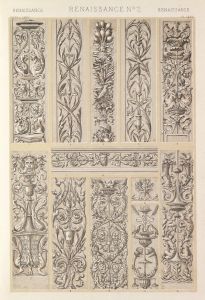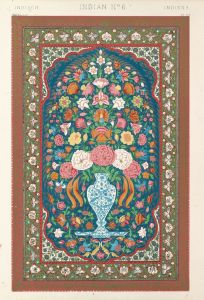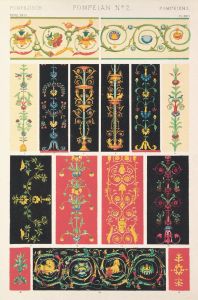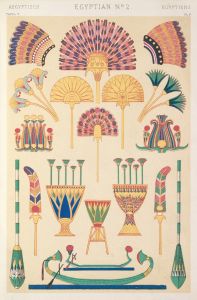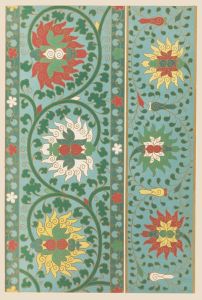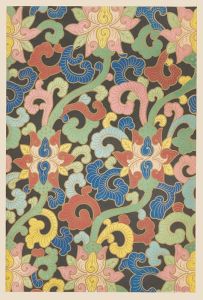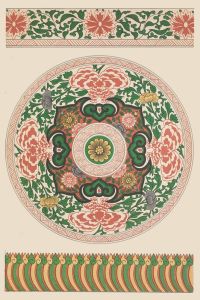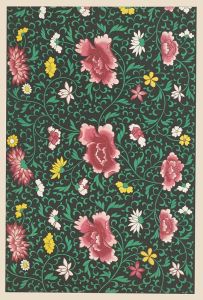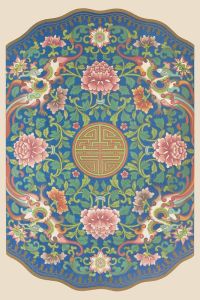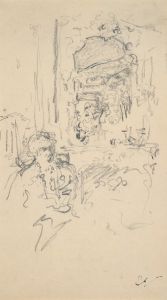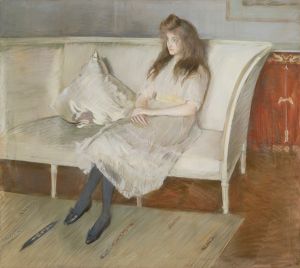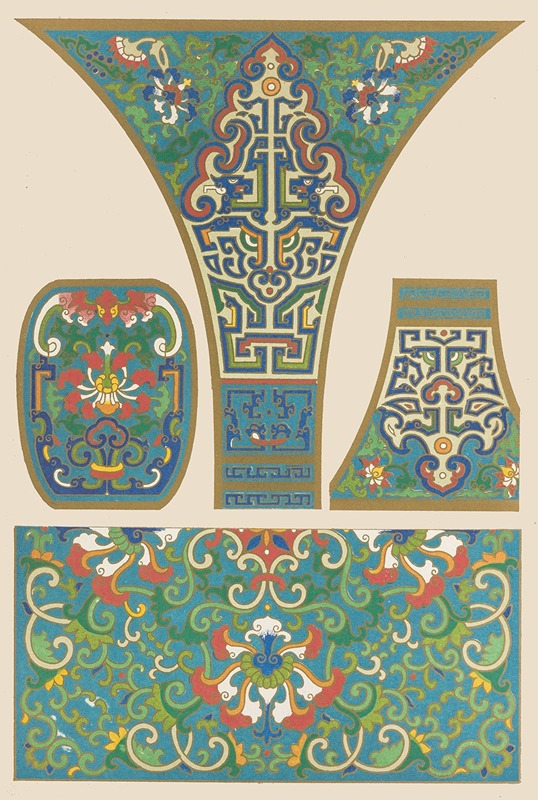
Examples of Chinese ornament, Pl.26
A hand-painted replica of Owen Jones’s masterpiece Examples of Chinese ornament, Pl.26, meticulously crafted by professional artists to capture the true essence of the original. Each piece is created with museum-quality canvas and rare mineral pigments, carefully painted by experienced artists with delicate brushstrokes and rich, layered colors to perfectly recreate the texture of the original artwork. Unlike machine-printed reproductions, this hand-painted version brings the painting to life, infused with the artist’s emotions and skill in every stroke. Whether for personal collection or home decoration, it instantly elevates the artistic atmosphere of any space.
"Examples of Chinese Ornament, Pl.26" is a plate from the influential design book "The Grammar of Ornament" by Owen Jones, first published in 1856. Owen Jones (1809-1874) was a British architect and designer who played a significant role in the development of design theory in the 19th century. His work aimed to provide a comprehensive study of ornamental art from various cultures around the world, and "The Grammar of Ornament" remains a seminal text in the field of design.
Plate 26 specifically focuses on Chinese ornamentation, showcasing the intricate and symbolic designs characteristic of Chinese art. The plate features a variety of patterns and motifs that were commonly used in Chinese decorative arts, including textiles, ceramics, and architectural elements. These designs often incorporate natural elements such as flowers, leaves, and animals, as well as geometric patterns and abstract forms.
Jones' work was heavily influenced by his travels and studies of different cultures. He believed that understanding the principles of design from various traditions could inspire and improve contemporary Western design. In "The Grammar of Ornament," Jones categorized and analyzed the decorative arts of different cultures, providing detailed illustrations and descriptions to highlight their unique characteristics and underlying principles.
The Chinese ornaments depicted in Plate 26 are notable for their balance, symmetry, and use of color. Traditional Chinese design often emphasizes harmony and the integration of natural elements, reflecting the cultural importance of nature and the philosophical principles of balance and harmony. The motifs in Plate 26 may include representations of mythical creatures such as dragons and phoenixes, which are common in Chinese art and symbolize power, strength, and renewal.
Jones' presentation of Chinese ornamentation in "The Grammar of Ornament" was part of a broader Victorian interest in the arts and crafts of non-Western cultures. This interest was fueled by increased global exploration and trade, which brought a greater awareness and appreciation of the artistic traditions of Asia, the Middle East, and other regions. By documenting and analyzing these traditions, Jones contributed to a greater understanding and appreciation of global design.
"The Grammar of Ornament" was widely influential in the fields of architecture, interior design, and the decorative arts. It provided a valuable resource for designers and artists seeking inspiration from historical and cultural sources. The book's emphasis on the principles of design, rather than mere imitation, encouraged a more thoughtful and informed approach to the creation of new works.
In summary, "Examples of Chinese Ornament, Pl.26" by Owen Jones is a detailed illustration of traditional Chinese decorative motifs, as part of his broader effort to document and analyze the ornamental arts of various cultures. This work has had a lasting impact on the study and appreciation of design, highlighting the importance of understanding and respecting the artistic traditions of different cultures.





